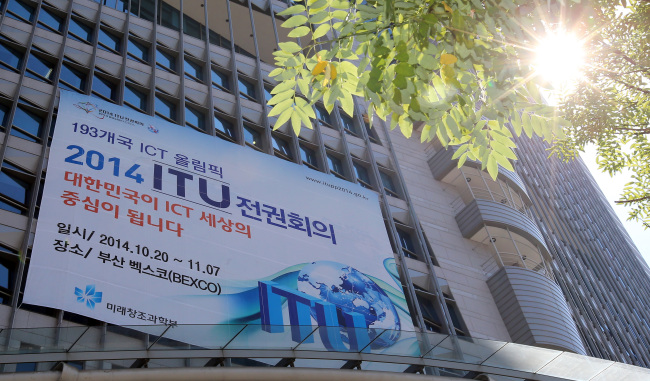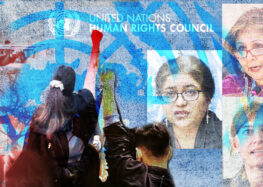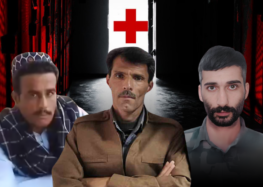UN Body Warns Governments about Health Hazards of Jamming Signals
A new United Nations resolution warning member states about their responsibility to protect the health of their citizens against electromagnetic waves, including satellite jamming signals, was approved at the UN’s Telecommunication Union (ITU)’s Plenipotentiary Conference which took place between October 20 and November 7, 2014, in Busan, South Korea (Resolution 176, pg. 277). The ITU is the UN’s specialized agency for information and communication technologies.
The ITU’s Human Exposure to and Measurement of Electromagnetic Fields Resolution is significant because it directly confronts the dangers of satellite jamming, a practice that Iran engages in extensively. Jamming signals are transmitted via a variety of means, and are designed to block or interrupt local receptors’ reception of international satellite broadcast signals. In this manner, state officials are able to prevent the Iranian citizenry from accessing broadcast content that is not state-approved. There are serious and well-established fears that the radiation resulting from such satellite jamming signals is endangering the health of Iranian citizens, possibly even causing cancer.
The adverse health effects of satellite signal jamming have been the focus of much attention by the Iranian media, the public, and government officials recently. On October 2, 2014, Masoumeh Ebtekar, head of the Environmental Protection Agency, demanded an end to the transmission of the satellite jamming signals due to their harmful impact on public health.
“This resolution is the strongest international document suggesting that there are real concerns about the dangers of non-standard radio signals, such as satellite jamming signals, on the health of citizens, and generally emphasizes the warnings issued by Iran’s Department of the Environment and medical experts,” Ali Akbar Mousavi, former Deputy Head of the Iranian Parliament’s Telecommunications Committee and a researcher in communications technology, told the International Campaign for Human Rights in Iran. “By approving this resolution, such satellite jamming is now deemed against international regulations and I hope that as the Head of Iran’s Supreme National Security Council, the President would order an end to the jamming,” he said.
According to this resolution, the ITU asks governments to observe the standards approved for transmitting levels of electromagnetic waves that are safe for people. These transmission level standards must be applied for any frequencies in the range of 3 KiloHertz to 300 GigaHertz, which thus include the frequencies that are used in satellite jamming signals used by the Iranian authorities to restrict access to satellite television networks by the citizens.
During recent years, state organizations which have never officially assumed responsibility for transmitting the satellite jamming signals and which continue to operate in the shadows, have exposed millions of Iranian citizens to such electromagnetic waves in order to restrict their access to satellite television networks or cellular phone services. It is widely believed that the Revolutionary Guards and their affiliates are responsible for satellite jamming activities. Since such jamming signals are directly transmitted and distributed in densely populated urban areas, there is widespread concern about their destructive impact on the health of the citizenry.
Referring to the cancer-causing effects of the satellite jamming signals, Saeed Motessadi, Deputy Head of the Environmental Protection Agency, told Salamat News on October 4, 2014, that “the Department of the Environment’s recommendation is the complete elimination of the jamming. But if action must be taken to fight the concept of cultural invasion and to protect the country’s values and dignity, other avenues must be considered.”
The negative impact of jamming signals is not limited to causing cancer. Transmitting such signals can also lead to a disruption in the country’s weather monitoring systems which can expose the lives of the citizenry to life-threatening risks. According to the head of the Meteorological Organization of Iran, “The Capital’s meteorological radar most likely experiences noise as a result of jamming signals and this has led to one-third of the meteorological images for Tehran to be unreadable,” Davood Parhizgar told IRNA on November 2. “Failure to predict Tehran’s June 2014 storm could have been due to the same noise and unreadable images,” he added.
Six people lost their lives and 30 others were injured in a severe sand storm in Tehran on June 2, 2014, after the country’s weather monitoring system was unable to warn the citizens of the approaching storm.
Iran’s Minister of Communications and Information Technology, Mahmoud Vaezi, said on December 21, 2013, that a committee has been formed to measure the effects of radiation on the health of Iranian citizens. “Regarding the satellite [jamming] signals, a committee has been formed at the Communications Ministry, which is comprised of a representative from the Deputy Health Minister and the Deputy Head of the Department of the Environment, and the Deputy Head of the Atomic Energy Organization. For nearly the past two months, this Committee has been measuring radiation in different areas day and night.”
In response to this, Hadi Ghaemi, the Executive Director of the International Campaign for Human Rights in Iran said, “Committees formed inside the country for investigating this subject must publicly and transparently announce their methodology, as well as the relevant statistics and documents. An opaque approach to an issue that puts public welfare at risk is not acceptable under any circumstances. We have information regarding instances where knowledgeable physicians who have tried to publicly address these issues have been threatened to keep silent. Experts and physicians must be allowed to freely participate in such discussions.”
Ghaemi continued, “The issue of the negative effects of satellite jamming on the citizens is neither a political nor a partisan issue; rather, it is a public health issue. Officials who consider this information to be confidential or who prevent public and expert discussion of the subject must understand that the serious harm inflicted by these jamming signals will affect everyone, including these officials’ own families and friends. It is critical that the jamming be immediately stopped for the sake of everyone’s health.”
The ITU resolution asks all governments to cooperate regionally in the exchange of information and training, taking Electromagnetic measurements, and assessing their impact on the health of citizens, and to periodically review and ensure that the human exposure to radio-frequency energy is in accordance with standards. The resolution further makes the ITU Secretary General responsible for preparing a report to the organization’s council about the implementation of the resolution, as well as to the next ITU Summit.
“The possibility of physical harm, and particularly cancer, as a result of the use of high power electromagnetic frequency, such as the kind used for creating satellite jamming—especially where there is a short distance between the source and the human body—is quite real. This is why doctors and human rights defenders strongly recommend that all countries pay attention to the standards set by the World Health Organization,” said Dr. Hassan Nayeb Hashem, a physician and human rights activist.







